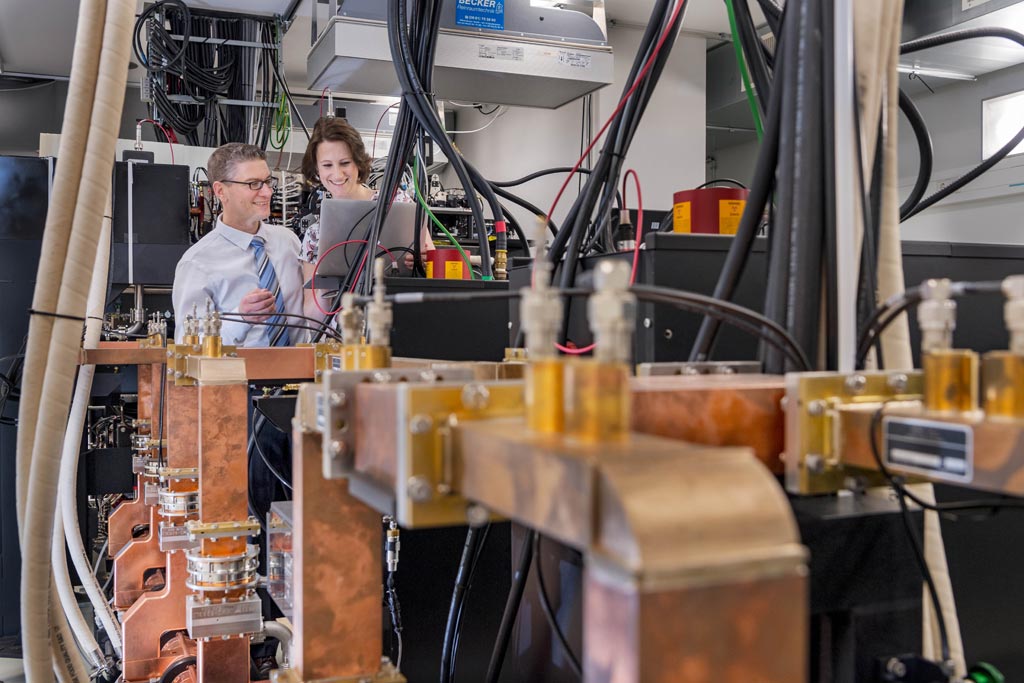Compact Synchrotron Simplifies Coronary Angiography
By MedImaging International staff writers
Posted on 08 Mar 2017
An innovative miniature particle accelerator could significantly reduce the amount of contrast agents needed for coronary angiography by generating monoenergetic X-rays.Posted on 08 Mar 2017
Developed by researchers at Munich Technical University and Klinikum rechts der Isar, the Munich Compact Light Source (MuCLS) mini-synchrotron can generate X-rays that have an exact monoenergetic optimal energy level. While this was previously possible only with circular particle accelerators with a diameter of several hundred meters, the MuCLS is a lot smaller, about the size of a car.

Image: Dr. Munzel and a colleague near the MuCLS (Photo courtesy of TUM).
Contrast agents such as iodine and gadolinium have an energy absorption edge, which means that when the substance is exposed to X-rays of certain energy level, image contrast in the marked organ is very good. But when energy levels are below the absorption edge (30 keV for iodine), contrast deteriorates rapidly. The contrast also becomes weaker at energies far above the absorption edge. Consequently, conventional broad-spectrum X-ray sources require an adequate quantity of contrast agent in order to offset this effect and obtain a sufficiently sharp image for diagnosis.
According to the researchers, using monoenergetic X-rays would make it possible to decrease the required concentration of contrast agents significantly. Iodine levels could be reduced by about one third with no loss of contrast, while for gadolinium the reduction could even greater, around 50%. The researchers added that the experimental approach can be extended in the future to dual-energy K-edge subtraction angiography, where the beam energy is oscillated rapidly between above and below the energy absorption edge. The study was published on February 9, 2017, in Nature Scientific Reports.
“Conventional X-ray sources generate a relatively broad range of energy levels. By contrast, the energy of X-rays produced by the MuCLS can be controlled much more precisely,” said lead author physicist Elena Eggl, PhD, of TUM. “The MuCLS is the very first machine of its kind; moreover, it is designed for fundamental research, and not for examining patients. But with detailed computer simulations and tests with a pig's heart, using blood vessels dyed with iodine, [we] were able to demonstrate feasibility of the method.”
“Soft tissues such as organs and blood vessels are nearly impossible to examine in X-ray images; to detect a narrowing or other changes in coronary blood vessels, patients are therefore usually injected with an iodinated contrast agent,” said senior author Daniela Münzel, MD, an adjunct teaching professor for radiology at Klinikum rechts der Isar. “These substances can sometimes be hazardous to health, particularly in patients with kidney insufficiency; complications may arise, in some cases even kidney failure.”














